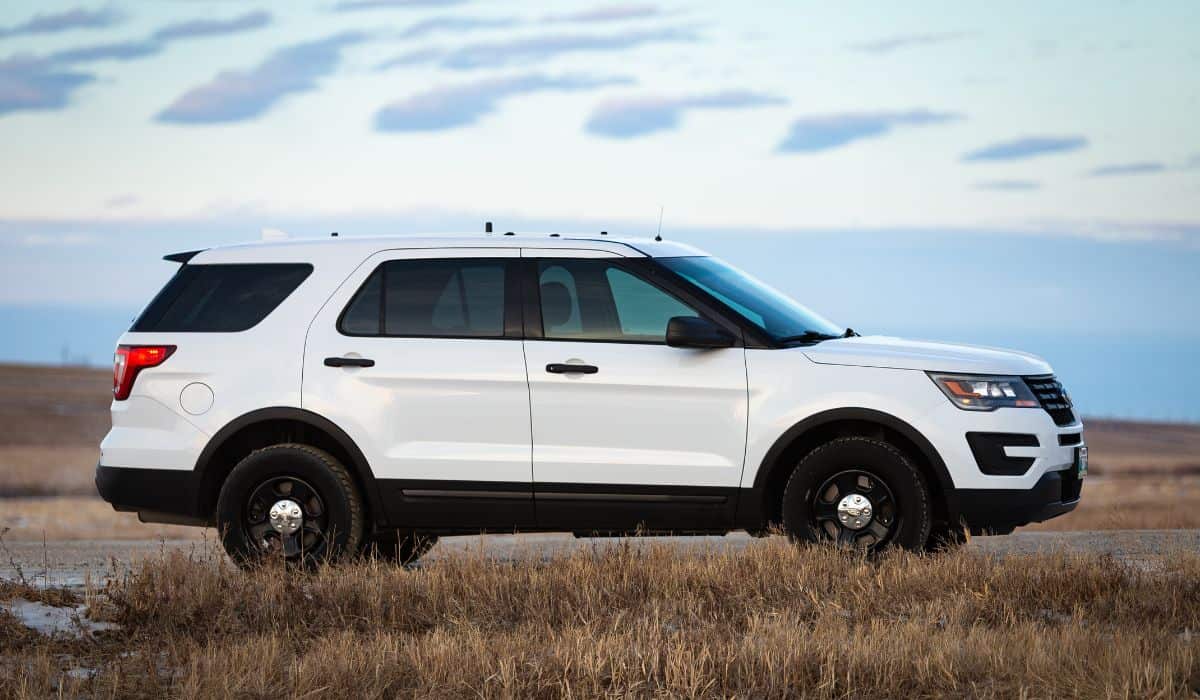Ford Explorer 4WD: Everything You Need to Know
The Ford Explorer 4WD is one of the most popular SUVs on the market. It offers a perfect mix of power, comfort, and convenience, making it an ideal choice for families and adventurers. With its robust 4WD capabilities, you can take on any terrain, no matter the weather. Here’s everything you need to know about the Ford Explorer 4WD.
The Ford Explorer 4WD is an impressive SUV that combines the space and convenience of an SUV with the ruggedness of a 4-wheel drive. With its powerful engine, towing capacity, spacious interior, and advanced safety features, it’s a great all-rounder for both off-road and on-road adventures.
Whether you’re looking for a dependable daily driver or an adventurous off-roader, the Ford Explorer 4WD has everything you need. Let’s get into the details and look at how to know if your Ford Explorer is a 4WD. We’ll also find out the difference between 4WD and AWD.
Are All Ford Explorers 4 Wheel Drive?

Most Ford Explorers come with a standard two-wheel drive, but many are available with four-wheel drive. For those who want an even more advanced system, certain models can be upgraded to intelligent four-wheel drive, which offers advanced features such as Hill Descent Control.
4WD vs AWD: What’s the Difference?
To understand the difference between 4WD and AWD, we’ll have to take a deep dive and find out what exactly they are and how they work.
All-Wheel-Drive (AWD)
Most AWD systems are designed to be intuitive, allowing the vehicle to switch between two-wheel and four-wheel drive modes based on the traction needs of the moment without the driver needing to intervene. The system is designed to be efficient and fuel-saving.
Some highlights of AWD include:
- The ability to think for itself, so your only job is to focus on driving.
- It can balance fuel economy and extra traction.
- It’s suitable for paved roads but can also handle light off-roading.
- It’s available in various cars, crossovers, and SUVs.
All-wheel drive links your car’s engine to the front and back wheels. It can alter the amount of power transmitted to the back or front wheels or disconnect power from one set of wheels altogether. This is known as “part-time all-wheel drive.” and it’s the most common type of AWD.
For popular small and medium all-wheel drive SUVs, such as the Honda CR-V and Toyota Highlander, a huge chunk of their power goes to the front wheels.
If they are equipped with AWD, they are designed with sensors that detect when the front wheels are slipping and automatically activate all-wheel drive. This process is effortless on the driver’s end and helps the car run more efficiently.
Note: Since part-time AWD systems only distribute power to the front wheels most of the time, they are less effective in extreme conditions.
AWD isn’t limited to part-time all-wheel-drive only. Some cars come with a full-time all-wheel drive system. This means that the vehicle distributes power to the front and rear wheels at all times. This system may also control how much power is conveyed to the front and rear, depending on if the wheels start to slip.
The upside of full-time AWD is that the power is distributed evenly between the front and rear wheels than in most part-time AWD vehicles. Additionally, it responds quickly to slipping wheels. On the downside, it’s less fuel-efficient compared to part-time AWD.
Certain AWD hybrid vehicles function just as a classic AWD car would, while some are designed with a separate electric motor that solely powers the back wheels. There are also performance and luxury vehicles that use AWD to enhance handling around corners, not just to navigate unfavorable weather conditions.
Four-Wheel-Drive (4WD)

Four-wheel-drive vehicles (sometimes abbreviated as 4WD or 4×4) have their front and rear wheels connected, allowing an equal distribution of power between them. Although they’re quite powerful, they aren’t as useful when driving on paved roads, as they usually only send power to the rear wheels.
4WD’s notable highlights are that:
- It’s sturdy and built to handle harsh conditions.
- It’s helpful when driving off-road.
- It’s usually on vehicles with higher towing capacities.
- It’s mostly available on trucks and huge SUVs.
The workings of a 4×4 vehicle are based around a transfer case, which links the front and rear wheels, allowing the engine’s power to be shared between them. This means that all four wheels move at the same speed, giving the vehicle an advantage on tough terrain and slippery surfaces, where it can continue to move forward even if more than one wheel loses traction.
4WD vehicles have a switch that allows you to shift between 4WD and 2WD seamlessly. It’s important to keep in mind that it’s best to reserve 4WD for slippery surfaces, slow speeds, and off-roading. Running the vehicle in 4WD on a high-traction surface like a dry road can result in premature tire wear or damage to the car.
Full-time 4WD is an always-on system, capable of functioning on the road and at any speed due to the extra components that change the speed of the front and rear wheels. This makes the system more useful while driving on roads, but it also impacts the vehicle’s fuel efficiency.
Trucks and other 4x4s made for extreme off-road conditions may be equipped with additional components designed to ensure all four wheels turn at the same speed, even when it’s rough. Such components include locking differentials and low-speed gearboxes, which the driver operates manually and are only meant for off-road use.
How Do I Know If My Ford Explorer Is 4 Wheel Drive?

To determine if your Ford Explorer is four-wheel drive (4WD) or front wheel drive (FWD), you can look for a 4WD label on the liftgates or side of the car, though this may be misleading. To confirm if it is 4WD, you can check underneath the car for a bar connecting the two rear wheels.
Where Is the 4×4 Button on a Ford Explorer?
Depending on the model year, you’ll find either a lever or knob near the gear shift with options for 2WD, Auto, 4WD Low, and 4WD High. Stop the vehicle and move the lever or knob to the desired setting. Once you start moving again, the selected wheels will be engaged, and you’ll be ready to go.
If you own a newer model of the Ford Explorer, you don’t have to worry about manually engaging the 4WD because the Intelligent 4WD system will take care of that for you. It will detect the road conditions, such as traction and torque, and automatically switch the 4WD on when necessary.
How Long Do Ford Explorers Last?
The lifespan of a Ford Explorer depends largely on factors such as how and where you drive it and regular maintenance. Generally, these vehicles can last anywhere from 10 to 17 years.
To get the most out of your Ford Explorer, it’s important to practice proper maintenance and drive no more than 12,000 miles per year. This can extend the vehicle’s life up to 15 years or more.
